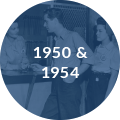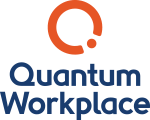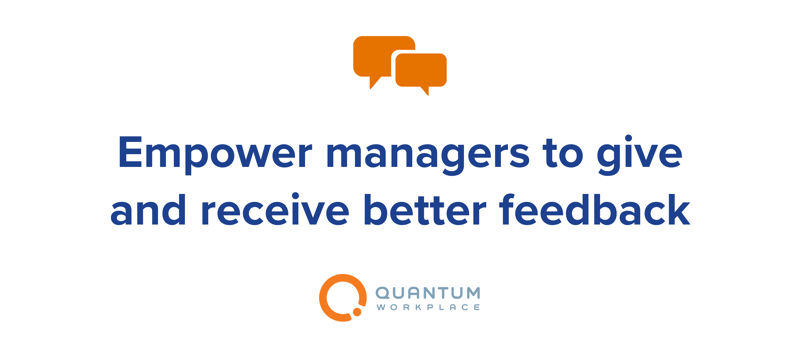What Every Leader Should Know About Employee Performance
In this article, we explore what employee performance is, how it has evolved to its current state, the elements of a successful performance management program, and how to motivate performance in your organization.
CONTENTS
- Intro
Back to top
Intro
Employee performance is something your organization probably cares a lot about – and rightly so. Employees are essential to an organization’s productivity, profitability, and ultimately, success, and those results aren’t going to happen without stellar employee performance. But just caring about employee performance doesn’t mean your organization really understands the concept, has an effective performance management process, or knows how to improve employee performance. That’s where this article can help. Continue reading for everything you’ve ever wanted to know about employee performance.
SHORT ON TIME?
Read this later! Email a PDF version to yourself now.
1
What is Employee Performance?
Employee performance is the measurement of how well an employee executes on explicit and implicit standards, goals, and priorities.Let’s break down this textbook definition to understand what employee performance really is:
“…the measurement of how well an employee executes…”
Employee performance is not binary. An employee’s performance isn’t just good or bad: “Yes, you met the targets,” or “Nope, you missed the goal.” Employee performance falls on a scale with lots of shades of gray. To view
“…explicit…”
Because employees have different roles and responsibilities, employee performance will look different for each employee. Setting and verbalizing the right goals and expectations is a huge (but not the only!) part of employee performance.
“…and implicit…”
As much as organizations try to avoid ambiguity, it’s impossible for every element of an employee’s performance to be explicitly stated. Yes, organizations should try to shed as much light on their expectations as possible – transparency is a wonderful ambition. But smart employees and managers also understand the unwritten rules of your organization.
“…standards, goals, and priorities.”
Employee performance is about much more than meeting the numeric goal set at the beginning of the year. Did the employee embody the values of your organization? Was he or she a good teammate? Did the employee work efficiently? Did he or she exhibit strategic thinking or financial savvy? To evaluate performance only on stated, numeric goals ignores all the other ways an employee influenced the organization’s success.
2
Measuring Employee Performance

As a concept so critical to organizational success, it’s no surprise that employers are constantly chasing a better understanding and measurement of employee performance. This effort to accurately capture employee performance has spawned about as many measurement techniques as there are unique companies; in other words, there are a lot of different ways to measure employee performance. Different scales, different metrics, different goals. But in the end, it doesn’t really matter.
“But in the end, it doesn’t really matter.”
While measuring employee performance is all well and good, in the end, measurement alone can do nothing to increase performance. Think back to those report cards you got in middle school. Sure, getting an A or F told your parents how you were currently performing in your social studies classes. But those grades couldn’t communicate whether you understood the causes of the Boston Tea Party.
Realizing this, most companies have moved beyond basic performance measurement (strictly goal tracking) and adopted the concept of performance management. Performance management is a process that aims to improve, not just measure, employee performance.
3
The Performance Management Evolution
Since the idea of employee performance first entered the collective consciousness, it has evolved quite a lot. Let’s walk through the landmark changes in performance management thinking in the last 200 years.

The Industrial Revolution moves large numbers of people from farms into factories. The concept of management first enters collective thought.

Frederick W. Taylor publishes “The Principles of Scientific Management,” establishing the importance of effective management by linking it to increased employee productivity. The study of management is born.

Elton Mayo and Fritz Roethlisberger’s Hawthorne Studies transform management theory. Instead of focusing on individuals and their innate abilities, Mayo and Roethlisberger focus on social context. The Hawthorne Studies show that employees' surroundings influence how they perform.

In the boom times after WWII, formal performance appraisal methods are developing. Annual Confidential Reports (ACRs), also known as Employee Service Records, record information on the performance of each individual employee. These reports are kept private — results are never shared with the employee.

The US government effectively backs performance appraisal philosophy with the Performance Rating Act and the Incentive Rewards Act, respectively. This legislation establishes a rating and incentive system for government employees.

Peter Drucker’s The Practice of Management popularizes measurement by objective, encouraging the manager and employee to discuss and agree on realistic, measurable goals for performance.

Employees finally get some transparency. Employees begin to receive formal written communication when their performance is unsatisfactory.

Brito vs. Zia Company, one of the first court cases regarding performance appraisals, establishes that performance appraisals must use a controlled, valid, and unbiased model.

Aubrey C. Daniels, a clinical psychologist, first coins the term “performance management” to describe the process of managing both performance-related behaviors and results.

As manufacturing and production jobs are automated or sent overseas, service companies take their place. “Employees are your greatest asset” becomes “employees are your only asset.” Employers adopt a more holistic, human approach to employee performance in an effort to work with, rather than against, the employee.

The positive psychology movement gains traction. Employee Engagement in Theory and Practice says positive psychology examines the optimal human functioning and “aims to discover and promote the factors that allow individuals, organizations, and communities to thrive.” Employers begin to understand the relationship between employee engagement, motivation, and performance.

A study by Reuters reveals 4 out of 5 employees are unsatisfied with their current performance reviews, pressuring HR teams to take a step back and evaluate current processes.

Samuel Culbert’s Get Rid of the Performance Review starts the abolition of a formal, annual review process. Companies like Kelly Services, General Electric, and Adobe follow his advice in favor of more frequent coaching conversations between employees and managers.

Google’s People Innovation team develops a the gDNA study. This century-long study aims to use science and survey results to better understand their work. “We all have our opinions and case studies, but there is precious little scientific certainty around how to build great work environments, cultivate high performing teams, maximize productivity, or enhance happiness.”

Companies adopt frequent, flexible one on one meetings as a means of performance management. As a result, Quantum Workplace and other software providers begin providing online tools to support these performance conversations.
4
The Current State of Performance Management
The evolution timeline above brings us to present-day employee performance management. Organizations everywhere are ditching the mechanism once thought to be the paramount example of performance management: the annual employee appraisal, employee review, or performance evaluation (the terms are interchangeable). So why are all these organizations leaving the outdated employee evaluation? And what are they turning to now?
Employers are leaving the annual employee review simply because they find it ineffective. Whether through anecdotal evidence or definitive research, they’ve seen the light: performance reviews don’t improve performance.
Employers have seen the light: performance reviews don’t improve performance.
The annual review isn’t frequent enough to address small issues before they become big problems, and it’s not uncommon for issues to fall through the cracks in a year’s time. The association between reviews and compensation often makes feedback more punitive than constructive. A formal annual review process stifles the open and transparent dialogue needed for real performance improvement. Besides that, nearly everybody hates it.

71% of employees prefer immediate feedback
(even if it’s negative)

90% of performance reviews are painful and ineffective

Performance reviews are managers’ most hated task, second to firing someone
So now that they’ve ditched the traditional performance review, how are all these organizations tackling employee performance? Most are cobbling together multiple tech solutions and performance philosophies to meet employee needs.
5
Manage to Motivate: Change Your Employee Performance Mindset
We’re thrilled that organizations are leaving behind the ineffective annual employee review. However, the very best employers are making one more critical shift: changing their mindset from “performance management” to “performance motivation.” The performance management process of old was touted as a way to improve employee performance; but its flaws are obvious in the term itself. To manage means to “control, organize, or administer.” Not much there that can increase performance. Performance management by conception was a very passive, bureaucratic process. Now, let’s look at performance motivation: to “drive, propel, or stimulate.” There’s the action and leadership that employees need.
To manage means to “control, organize, or administer.” To motivate means to “drive, propel, or stimulate.”
Performance motivation aims to inspire employees to supercharge their own performance. Wondering how to motivate employees? Through realistic and challenging goals, inspiring recognition, continuous coaching, and frequent conversations about performance.
6
4 Essentials of a Motivating Performance Management Program
As you move from performance management to performance motivation, make sure these four elements are a part of your performance strategy.

Describe the Vision with Goals
When it comes to individual success and team alignment, goals are crucial. Goal setting shows employees where they want to go; goal tracking keeps individuals motivated and everyone else informed on the way there. Studies show people who set goals are often more successful than those who don’t. A study conducted by a Harvard MBA program analyzed the success of three student groups: 1) those who wrote down goals with written plans to accomplish them, 2) those who had goals in mind but didn’t write them down, and 3) those who set no goals. After 10 years, the study found:
- Students who had goals in mind earned 2X the
amount - Students who wrote down goals with plans to accomplish them earned 10X the amount of the other two groups combined.
You can’t argue with those results. So, if goals are so important to performance, what’s the best way to set and track employee goals? First, let’s start with the basics. For goals to be effective, two elements must be thoughtfully and thoroughly considered.
- Goal setting: Many people assume they know how to set goals – but setting achievable yet challenging goals is a skill. Discuss possible goals with your employee to understand his or her thoughts on the matter. Examine team and organizational goals to make sure there’s alignment. Decide together what goals will drive improved performance.
- Goal tracking: Employee goals won’t mean anything if they’re forgotten as soon as they’re set. Make sure you and your employee establish a realistic, consistent process for measuring progress. Tracking progress publicly and in real-time leads to increased transparency and alignment across the organization.
Employee Goal Setting
Ok, now that we’ve got the basics down, let’s get into the
SMART Goals
The SMART goal acronym stands for Specific, Measurable, Attainable, Relevant, and Time-bound. SMART goals have been around for decades because they clearly articulate detailed goals. (But beware! A SMART goals template isn’t foolproof.)
Pros of SMART Goals:
- Narrows focus and explicitly defines the goal
- Tracks progress easily, motivating employees
- Aligns goals to the rest of the organization
- Boosts performance with built-in deadline
Cons of SMART Goals:
- Slows goal setting process with multiple criteria
- Creates fear of failure with “attainable” criteria
- Focuses heavily on goal setting, rather than pursuing
OKRs
OKR stands for Objectives and Key Results. This type of goal helps you set an overarching goal and specify the key actions that will make it happen.Pros of OKRs:
- Stretches employees and grows companies
- Encourages agility because of frequent goal adjustments
- Stresses transparency, increasing organizational alignment
- Balances aspiration with execution by linking the “why" and “how” together
Cons of OKRs:
- Slows
adoption process with less intuitive structure - Necessitates a system with increased goal setting and tracking ability
- Discourages employees with highly aspirational goals
Whether you’re looking to set SMART goals or OKRs, we’ve got the ultimate goal setting worksheet you need. Goal setting is a great place to start, but as we discussed earlier, it’s nothing without follow-through…and that’s where goal tracking comes in.
Employee Goal Tracking
A wide variety of goal tracking methods exist, and each can work well for the right type of person. However, there are four big similarities that all effective goal tracking methods have in common.
Public Tracking
First and foremost, tracking goals needs to be a public event. Whether your goal is losing weight or hitting sales records, you need the help, support, and encouragement of your community.
Aligned Tracking
Because an employee is part of a larger organism – the team – and that team is a part of an organization, employees must be able to show that their goals are pointing in the same direction as everyone else’s.
Real-Time Tracking
In order for employees to be held accountable,
Responsive Tracking
Sometimes, you backtrack on a goal; sometimes, the due date changes; sometimes, the goal has to be altogether scrapped. Goals are a guide, not an ultimatum. And as such, goals must have the ability to change and flex according to current circumstances.
Energize Employees with Recognition
Employees might meet a goal once, but their improved performance won’t last long without recognition of a job well done. When employees feel appreciated, they’re more likely to go the extra mile for their organization, resulting in increased employee performance. In fact, roughly 69 percent of employees said they’d work harder if they felt their efforts were better recognized.
Recognition Best Practices
Employee recognition can include a variety of activities that differ based on the workplace and the individual, and it’s important to find the best fit for your organization. Which employee appreciation ideas will motivate performance? Here are four best practices to follow:
- Encourage social recognition. Any employee should be able to recognize any other employee, bottom line. The total openness of such a program creates community in your office and increases visibility among teams and departments.
- Ask employees how they prefer to be recognized. If you’re really looking to motivate employees, do the simple thing: ask them. Each employee is different and so prefers a different form of recognition.
- Recognize for achievements and behaviors. Many organizations fall into the trap of only recognizing employees for formal goal achievements – but recognition should be given so much more. Recognizing behaviors that match company values reinforces those behaviors.
- Separate recognition from rewards. Though rewards can work, real recognition (not flimsy plaques or cheap trinkets) is most likely to benefit the organization. Specific, authentic praise for a job well done is an unforgettable and momentous event.
Despite the importance of recognition in driving performance, our research has found that less than 1 percent of organizations actually perform best in that area. Don’t let your organization ignore recognition! Employee recognition is one of the most simple and effective ways to drive performance.
Drive Continuous Performance with Feedback
Feedback – whether from peers, managers, or third parties – stimulates learning and growth processes essential to employee performance. Unfortunately, that doesn’t make giving and receiving feedback any easier. But if your organization is serious about motivating and improving employee performance, it better get comfortable doing the uncomfortable. Without a feedback culture, it’s only a matter of time before your organization stalls.
Types of Feedback
Feedback can come in all shapes and sizes; it’s up to you to decide which type is best for each situation.
Formal vs. Informal Feedback
If your aim is to motivate (not manage!) performance, then your organization must be able to support both formal and informal feedback. Most people have a good idea what formal feedback looks like: a performance review, a project post-mortem, really anything that is recorded in some way and follows a predetermined process. Informal communication is a bit more nebulous. Informal feedback could look like a quick Slack message or a request for input. Formal feedback should be used for big picture, essential functions or projects. Informal feedback is usually reserved for the smaller, more minute details of an employee’s performance.
Attributed vs. Anonymous Feedback
Attributed feedback is feedback that has the giver’s identity attached. Maybe you mention something to an employee in person, or you send an email to him or her suggesting a change in one of their processes; that’s attributed feedback. Anonymous feedback does not reveal the giver’s identity. Examples include a note on the breakroom fridge asking everyone to keep the kitchen clean, or general feedback that a manager collects and gives to an employee.
Both types of feedback have their merits: Attributed feedback discourages careless or overly critical comments and allows the receiver the opportunity to follow up if they have questions. Anonymous feedback removes the fear of retribution or hurting another’s feelings – but it often comes at a price. That’s why, in an effort to build a transparent and trusting performance culture, we recommend attributed feedback whenever possible.
Direct vs. Indirect Feedback
Direct feedback is exactly what it sounds like: you (the giver) give comments and suggestions directly to the coworker who needs feedback. It’s not necessarily given in person, and you can use mediums like an instant messenger, phone call, or email. When giving indirect feedback, on the other hand, you go to
While there are certainly concerns that should be handled by higher-ups (personal or sexual harassment, criminal activity, etc.), many organizations overuse indirect feedback. “Shielding” employees from feedback is a mistake. When feedback goes through the filter of HR or a manager, it often gets muted or muffled like a childhood game of telephone. What the employee eventually hears – if anything at all – might not be recognizable. Your employees are big girls and boys. They deserve to hear feedback firsthand.
Upward vs. Downward vs. 360 Feedback
Just like the others, these types of feedback are pretty self-explanatory. Upward feedback has direct reports giving feedback to their managers (or their manager’s manager), whereas downward employee feedback involves managers giving feedback to their direct reports. 360 feedback draws on peers, managers, direct reports, and even non-team or third-party contacts (like a customer or prospect) as sources of feedback.
Upward and downward feedback are both pretty standard in organizations, and they do a decent job of gathering feedback. However, for those organizations really looking to boost employee performance, there’s one solution that can get you all the information you need: 360 feedback. Though 360 feedback can often require more effort to collect, this is what makes it by far the superior form of feedback. Use
Giving Motivating Feedback
We’ve all been on the receiving end of great – and awful – feedback, so we know what a difference giving feedback the “right way” can make. If you only remember five things about giving employee feedback, let it be these five!
- Give them a heads up. Feedback is more painful when we don’t see it coming. Let the receiver know that you want to give him or her some feedback. Try not to give the receiver so much time that he or she dwells, but enough time that the receiver can mentally prepare.
- Coach, don’t evaluate. Provide guidance and mentorship, rather than finger pointing and criticism. Remember – you’re on this person’s team! Explain to the person why you want him or her to succeed.
- Have a conversation. Make sure the conversation goes both ways as opposed to a one-way dump. The recipient should be free to ask follow-up questions, describe the circumstances, and ask for help.
- Check your language. Avoid using matter-of-fact phrases such as, “You’re too sensitive,” or, “You’re not good at taking constructive feedback.” Instead, use “I” language to share your opinions (but keep in mind that saying things like, “I feel like you’re too sensitive” is cheating).
- Provide solutions. Explain what you’d like to see. Help the receiver by giving specific steps or a path to improvement. Set goals to monitor and evaluate.
Build Coaching Relationship with One on One Meetings
One on one meetings
The Best One on One Meetings
Just conducting one on ones doesn’t ensure that they’ll be successful in improving performance; the one on ones have to be conducted effectively. Here are the best practices for a successful one on one meeting:
- Give one on
ones top priority.
The number one rule for conducting one on one meetings that motivate employees is to make them a top priority. This meeting is another touchpoint for managers to learn about employees, invest in employees’ career goals and development, and show they care about employee concerns. - Schedule for consistency; allow for spontaneity.
In order to be effective, one on one meetingsneed to happen on a regular and consistent basis. Set a reoccurring meeting for a period that works for you and your employee. Once your schedule is in place, let employees know they can schedule a one on one meeting with you anytime to discuss concerns or opportunities as they arise. - Opt for a change of scenery.
Manager-employee one on ones are all too often held in the manager’s office, creating the manager-talking-at-the-employee dynamic we suggest you avoid. Head to a neutral zone and conduct your meeting over lunch at the employee’s place of choice, a local café, or at the picnic tables outside your building. - Stay on topic.
As difficult as it is to avoid, don’t get sucked into discussing updates on tasks and projects. Use your time together to discuss topics that don’t receive enough love in the office on a day-to-day basis, like team camaraderie, resource constraints or needs, work environment issues, professional development opportunities, and career path. Use our one on one meeting template to guide your conversations. - Take detailed notes.
You should leave each and every one on one meeting with detailed notes. Be sure to track both what was discussed and the tone/mood/body language during the discussion. - Don’t make it about you.
One on onesare about the employee, not the manager. While effective one on one meetings need to be a two-way conversation with dialogue from both the manager and employee, keep the subject matter focused on them. If you do become the topic of conversation, your employee should be discussing what you can do to better coach and develop them. - Be a coach.
Ask the right questions that encourage employees to reflect on their past growth, analyze their current status, and envision their future success. Challenge them to explore ways they can become a more productive and efficient worker and a better teammate and leader. Push them to make commitments and set goals for progress. - Leave with actionable next steps.
Be sure to leave your one on one meetings with a list of actionable next steps. Although you might have scribbled to-dos throughout your notebook, dedicate the last section of your one on one meeting notes for decisions/next steps. Your action steps should directly relate to the items discussed, like finding/organizing new growth opportunities or alleviating employee concerns.
7
What if We're Stuck with the Performance Review?
While we see companies left and right dropping the traditional performance appraisal methods, it might not be on the horizon for your organization. The switch to a more engaging and continuous performance management process can be a hard sell and an intimidating process for even the most progressive of organizations.
Luckily, performance appraisals can still be conducted in an engaging and motivating way. If you don’t see your organization scrapping more traditional methods of performance management any time soon, be sure to keep these concepts in mind:
- Treat employees like individuals.
This is the overarching rule for a more motivating performance review. While employees in the same field may need the same tools to succeed, each individual’s wants — which drive performance — will be different. - Open your door for frequent conversations.
Just because you’re stuck with the annual review doesn’t mean that’s the only time employees and managers should discuss performance. Encourage employees to raise questions or concerns whenever they have them. - Discuss more than checkmarks.
Yes, the traditional performance appraisal will include a list of overgeneralized goals and numeric ratings. But make your appraisal about more than this: move beyond the obligatory performance review questions and actually have a discussion. Evaluate the “why” behind the metrics and hash out more future-facing topics (such as long-term career vision and skills gaps to be developed). A progressive performance review template can help with that.
8
Tech to Take the Guesswork Out of Performance Management
If you’ve learned anything from this article so far, let it be that motivating employee performance is far from easy. It can be done – absolutely – but motivating long-term performance improvements is not a one-time initiative. Thankfully, you don’t have to go it alone.
Many organizations turn to some form of HR tech to support them in the journey. The software can go by different names – employee engagement software, performance management system, employee motivation tech – but all the systems should be able to support the four essentials (recognition, goals, feedback, one on ones) that we discussed above.
Here’s a bit more detail on what to look for in a software provider:
GOAL SETTING AND TRACKING |
| Houses and aligns teams and organizational goals in one place |
| Provides continuous and accurate tracking along with an unlimited historical record |
| Empowers managers and teams with flexibility and customization |
| Creates a fun, social community interface |
| Fosters transparent collaboration |
EMPLOYEE RECOGNITION |
| Corrals all employee praise into a single, public platform |
| Engages employees with a fun interactive platform |
| Allows for achievement- and behavior-based recognition |
| Tracks recognition trends for |
EMPLOYEE FEEDBACK |
| Establishes continuous dialogue through two-way communication |
| Maintains a permanent online record of conversations |
| Encourages authentic performance discussions |
| Supports all types of employee feedback |
ONE ON ONE MEETINGS |
| Organizes and streamlines performance conversations |
| Allows for frequent one on ones with easy, approachable interface |
| Integrates with HRIS and other performance metrics |
| Prompts manager and employee prep work for thorough and predictive discussion |
9
Final Thoughts
Employee performance is essential to the success of your organization, and as we’ve seen,
“To win in the marketplace you must first win in the workplace.”
-Douglas Conant, Campbell Soup Company CEO










